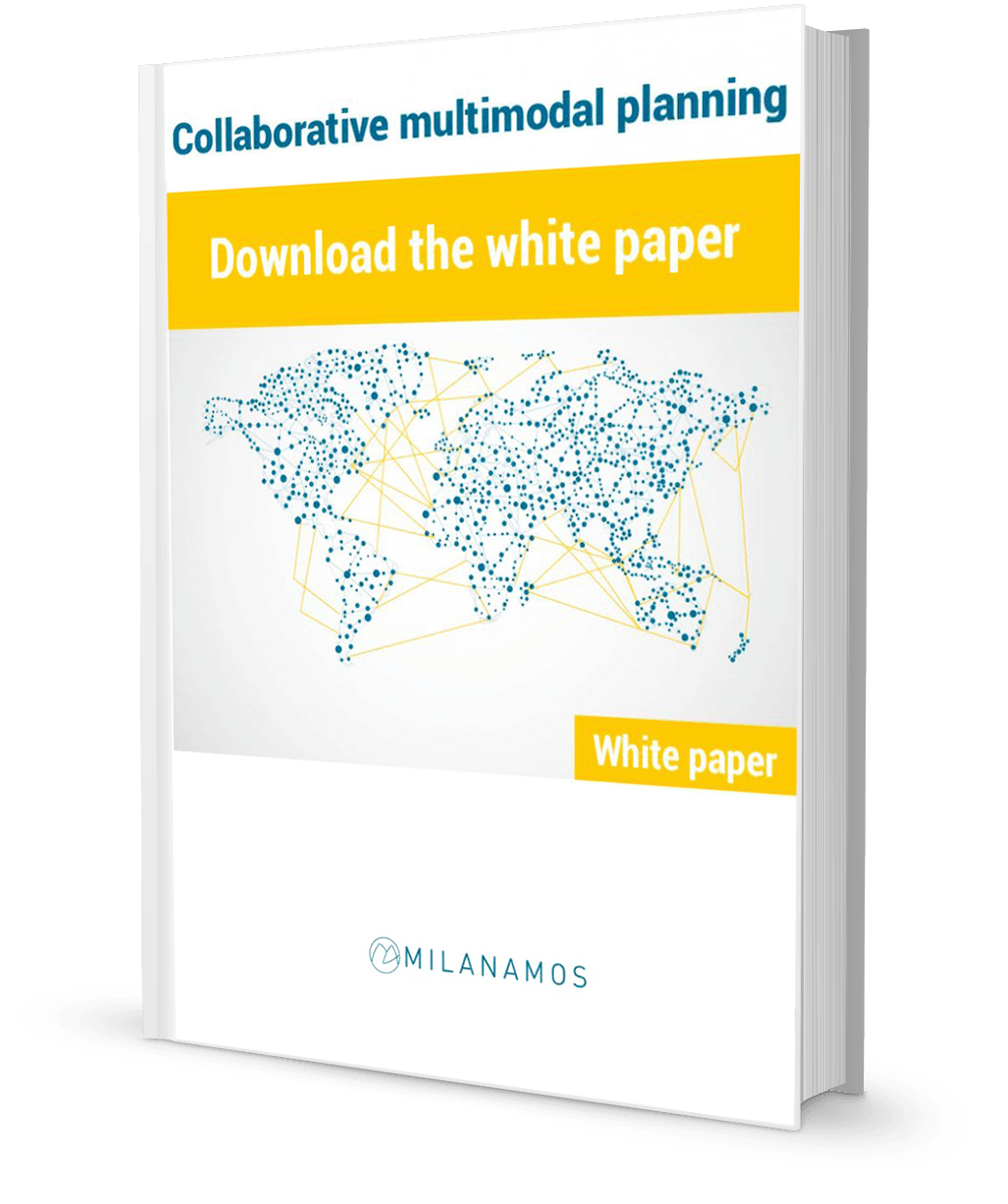“One day soon there will be an app that with a single search and single payment will book your whole itinerary, from anywhere to anywhere, including plane, train, bus, taxi, walking and hotel. I’ve got two strong contenders on my smartphone already.”
Christophe Imbert is the founder of French travel+data specialist Milanamos. The company specializes in uncovering big data insights for airlines, train and bus operators, airports and infrastructure owners.
“But big data isn’t really the problem,” says Imbert. “Using APIs from collaborative organizations, you can already search data from competing organizations and give travelers a range of options.”
“If you want a quick example of this, just go to www.gopili.com and enter the details of your next journey. I just did a search for my journey next week from Paris to Barcelona and got 307 offers, ranging in price from 16.50 euros to 700 euros. The offers included plane, train, coach and car options. The Skyscanner app on my phone also offers a similar capability.”
The challenge isn’t big data. It’s small data … and my data.”
The website Mobility Lab (link below) published an interesting blog post in 2015 about ‘3 Ways Multi-Modal Travel is Tricky for App Developers’.
And the challenges that article brought to mind aren’t to do with the weight of big data, but rather how to lightly finesse the data so that each traveler gets personally relevant travel options.
“For example,” says Imbert, “with my journey from Paris to Barcelona next week, it’s great to know how to get from hub to hub (say Paris CDG to Barcelona El Prat), but that big journey is just the tip of my traveliceberg. How do I get from my apartment in Paris to CDG? How do I get from El Prat to the conference hotel in Barcelona?”
It’s questions like that which are taxing the imagination of app developers.
For example, the Mobility Lab article poses the question of ‘when to hide drive to transit results?’. If an app is concerned with ecological issues, then the self-drive or Uber options might be hidden in favor of getting a bus. Or, to take that a stage further, the bus company using bio-fuel is favored in search results over the bus company using diesel.
“Another interesting question posed by Mobility Lab,” Imbert says, “is whether I should be offered a city-center walking option, or a bus option.” In this example, if the walk from say, the train station to the conference center is 10 minutes, but there is only one bus an hour, then walking is the statistically sensible option. “Unless the weather data says there’s a high chance of rain, or the app knows I can’t walk,” Imbert adds, “in which case the bus is the sensible option.”
“It’s nuances like these which turn travel apps from being a relatively blunt instrument into a ‘must have’ travel companion,” says Imbert.
Heuristic and ‘collective’ programming in multimodal travel apps.
Heuristic programming is about giving individuals choices. For example, if the traveler is going to Zurich for 2 day conference, maybe they’d like to add an AirBNB weekend break to the end of their journey, or even hire a camper van to explore the Swiss alps? If the app knows the traveler’s preferences, it can build up increasingly customized options for every journey.
Heuristic programming gives the traveler a highly personalized itinerary, based on their abilities, preferences and local condidtions.
But turn that programming lens through 180 degrees and what could be termed ‘collective programming’ sees what the herd is doing and adjusts the algorithm accordingly. For example, if there’s a spike in search enquiries from A to B (maybe because there’s a sport event happening), the app provider can arrange for charter coaches and offer that option at a preferred rate.
“It’s early days for multimodal travel apps,” concluded Imbert. “The programs on my phone are already impressive, but the opportunity for more nuanced and personalized programming is what is really going to unlock consumer adoption and developer monetization.”
Turning big data into smart travel applications.
The first step in creating nuanced applications is managing the big data. And big data for the transport industry is the niche skill at Milanamos.
We are engaged with transport operators, third party developers and other interested parties to help define the future of multimodal travel apps.
Reference used in this article.
Eye For Travel : Multimodal metasearch.
http://snip.ly/0u5h2
Kelbillet
http://snip.ly/lez03
Gopili
http://snip.ly/db91n
Skyscanner
http://www.skyscanner.net/
Vivanoda
http://snip.ly/6vnph
Mobility Lab. App developer challenges.
http://snip.ly/8wpre











